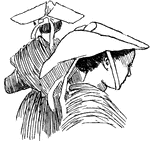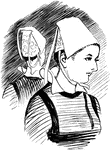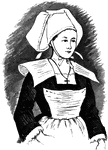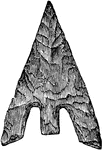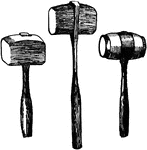
Mallets
A mallet is a type of hammer with a head made of softer materials than the steel normally used in hammerheads,…
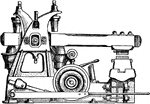
Horizontal Steam Power Hammer
A trip hammer resembles a hand-hammer held in a horizontal position. The hammer is placed at the end…
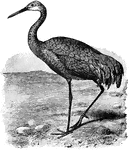
Sandhill Crane
Common in Florida, the sandhill crane (Grus canadensis) is a large bird with a wingspan of up to seven…
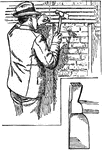
Lather's Hatchet
It has a large flat blade with a straight edge. At the back is a peen or hammer head, and in the middle…

Iron Planer
A planer is a type of metalworking machine tool that is analogous to a shaper, but larger, and with…
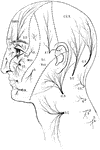
Sensory Nerves to the Head and Neck
Distribution of sensory nerves to the head and neck. Labels: Ophth, ophthalmic division of the fifth…

Tympanic Ossicles
Tympanic ossicles of left ear. A, incus as seen from front. B, Malleus, viewed from behind. C, Incus…

Section of the Head and Neck
Sagittal section through mouth, tongue, larynx, pharynx, and nasal cavity. The section was slightly…

Sections of the Tongue
A, Transverse vertical section through the tongue. B, Longitudinal vertical section through the tongue.…

Chattanooga, Tennessee in 1862
Chattanooga, "the Scenic City", is the fourth-largest city in Tennessee (after Memphis, Nashville, and…
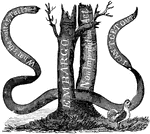
Non Importation Act
Newspapers and speakers especially condemned the "land embargo" — the cutting-off trade with Canada.…

Rall's Headquarters
Johann Gottlieb Rall (ca. 1726 - December 26, 1776 ) was a German colonel in command of Hessian troops…

Abdomen Showing Displacement Caused by Corset
Abdomen of female showing displacement resulting from tight lacing. The liver is much enlarged, and…

Pancreas and Duodenum from Behind
The pancreas and duodenum from behind, with the pancreatic duct exposed. The superior mesenteric vessels…

Gold Medal Awarded to John Paul Jones (Back)
The Congressional Gold Medal awarded to John Paul Jones, America's first well-known naval fighter in…

Yellow-throated Vireo
The Yellow-throated Vireo, Vireo flavifrons, is a small American songbird. Adults are mainly olive on…

White-marked Tussock Caterpillar
Orgyia leucostigma, the White-marked tussock moth, is a moth in the family Lymantriidae. The caterpillar…
Brown-tail Moth Web
The Brown-tail (Euproctis chrysorrhoea) is a moth of the family Lymantriidae. It is distributed throughout…
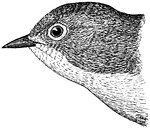
Nashville Warbler
The Nashville Warbler, Vermivora ruficapilla, is a small songbird in the New World warbler family. They…

White-breasted Nuthatch
The White-breasted Nuthatch (Sitta carolinensis) is a small songbird of the nuthatch family which breeds…

Yellow-throat Vireo
The Yellow-throated Vireo, Vireo flavifrons, is a small American songbird. Adults are mainly olive on…
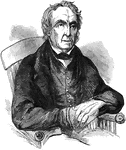
Jonathon Harrington
Jonathon Harrington, fatally wounded by a British musket ball, during the Battle of Lexington and Concord,…
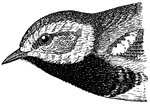
Black-throated Green Warbler
The Black-throated Green Warbler, Dendroica virens, is a small songbird of the New World warbler family.…
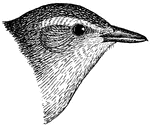
Warbling Vireo
The Warbling Vireo, Vireo gilvus, is a small songbird. Adults are 12 cm long and weigh 12 g. They are…

Yellow-throated Vireo
The Yellow-throated Vireo, Vireo flavifrons, is a small American songbird. Adults are mainly olive on…

Rose-breasted Grosbeak (Male)
The Rose-breasted Grosbeak, Pheucticus ludovicianus, is a large seed-eating bird in the cardinal family.…

Rose-breasted Grosbeak (Female)
The Rose-breasted Grosbeak, Pheucticus ludovicianus, is a large seed-eating bird in the cardinal family.…

Lincoln Medal from French Democrats (Back)
Following Lincoln's assassination, French Democrats testified their appreciation of his character and…

Click Beetle
The family Elateridae is commony called click beetles (or "typical click beetles" to distinguish them…

Tortricidae
Tortricidae is a family of moths in the order Lepidoptera. They are commonly known as tortrix moths.…

Brown-tail Moth
The Brown-tail (Euproctis chrysorrhoea) is a moth of the family Lymantriidae. It is distributed throughout…
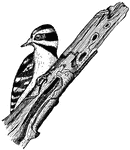
Downy Woodpecker
The Downy Woodpecker, Picoides pubescens, is the smallest woodpecker in North America. Adults are mainly…

William Marcy Tweed
William M. Tweed (April 3, 1823 – April 12, 1878), sometimes informally called Boss Tweed, was an…
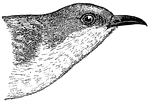
Black-billed Cuckoo
The Black-billed Cuckoo, Coccyzus erythropthalmus, is a cuckoo. Adults have a long brown tail and a…

Song Sparrow
The Song Sparrow, Melospiza melodia, is a medium-sized American sparrow. Adults have brown upperparts…

Decatur's Medal, Back
Commodore Stephen Decatur, Jr (5 January 1779 – 22 March 1820) was an American naval officer notable…

Meadowlark
Meadowlarks are birds belonging to the genus Sturnella in the New World family Icteridae. This genus…
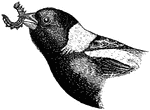
Bobolink (Male)
The Bobolink, Dolichonyx oryzivorus, is a small New World blackbird and the only member of genus Dolichonyx.…

Bobolink (Female)
The Bobolink, Dolichonyx oryzivorus, is a small New World blackbird and the only member of genus Dolichonyx.…
Double-Toothed Prominent Caterpillar
The caterpillar stage of the double-toothed prominent (Nerice bidentata) showing its serrated back.
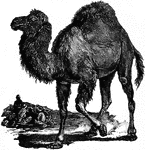
Dromedary
The Dromedary camel (Camelus dromedarius) is a large even-toed ungulate. It is often referred to as…
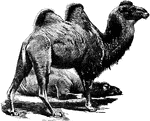
Bactrian Camel
The Bactrian Camel (Camelus bactrianus) is a large even-toed ungulate native to the steppes of north…
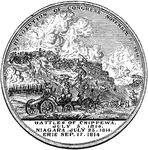
James Miller's Medal (Back)
In 1814, Miller was Colonel of the 21st Infantry Regiment and led his men in the capture of the British…

Climbing Perch
The Anabantidae are a family of perciform fish commonly called the climbing gouramies or climbing perches.…
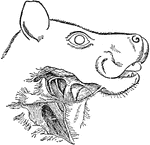
Head and Neck of Singing Fruit Bat
Epomophorus franqueti. Males have two large pharyngeal sacs and an enlarged larynx that enables them…

Head of Mastiff Bat
They are generally quite robust, and consist of many strong flying forms with relatively long and narrow…

Cobra Head
Cobras are venomous snakes of the familys Elapidae, of several genera, but particularly Naja. (Non-cobra…
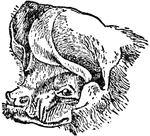
Head of Free-tailed Bat
The Big Free-tailed Bat (Nyctinomops macrotis) is a bat species found in South, North and Central America.
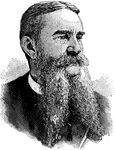
John Grimes Walker
John Grimes Walker (20 March 1835 – 16 September 1907) was an admiral in the United States Navy…

Crane
Cranes are large, long-legged and long-necked birds of the order Gruiformes, and family Gruidae. Unlike…
